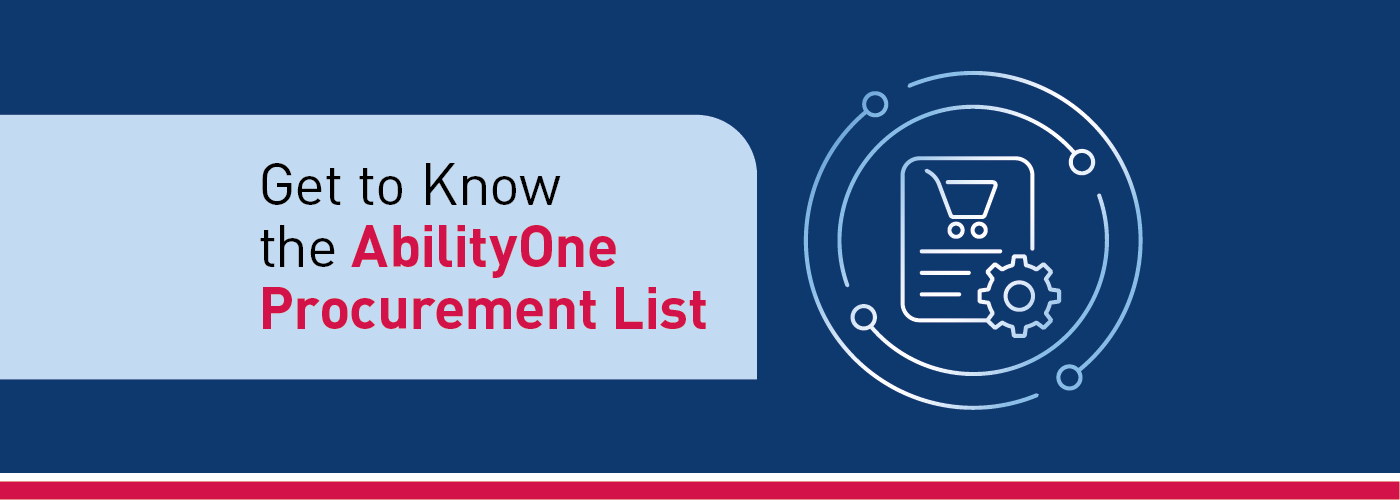Get to know the AbilityOne Procurement List

Most of us are familiar with the concept of a "to do" list, a grocery list or even a bucket list, but what about a procurement list? The federal government has one; you can think of it as a shopping list for products and services. The word "procurement" is essentially business speak for the word "buying," but with established laws and regulations in place so that any purchases made with federal funding are done responsibly, transparently and with consistency. The government's procurement process is also structured to ensure that any purchases made by federal agencies also support several federally-led initiatives rooted in driving employment and environmental sustainability.
The U.S. AbilityOne Commission® (the Commission), the federal agency that oversees the AbilityOne® Program, maintains an extensive list of specific products and services known as the AbilityOne Procurement List (Procurement List). The items on this list are fulfilled by nonprofit agencies (NPAs) that employ people with disabilities, as well as people who are blind. Federal agencies are required to procure any products and services on this list. For example, they might buy office supplies, furnishings or military uniforms. Federal agencies also turn to the Procurement List when seeking a variety of professional services, facilities services, document management needs and more.
SourceAmerica's role in supporting the Procurement List
As a central nonprofit agency participating in the AbilityOne Program under the Javits-Wagner-O'Day Act, and through a Cooperative Agreement with the Commission, one of SourceAmerica's duties is to help maintain the integrity of the Procurement List. This includes recommending to the Commission to add, remove and update items on the list in accordance with the Commission's requirements, recommending fair market prices, ensuring accuracy and communicating where these various products and services are available.
A brief history
The Procurement List dates back to 1938 when the Wagner-O’Day Act was signed into law. This law required federal agencies to purchase specific products made by people who were blind. The Act also established the Committee on Purchases of Blind-Made Products. These actions laid the foundation for improving the employment prospects for people who were blind. In 1971, Congress amended this Act (to become the Javits-Wagner-O'Day Act), including people with significant disabilities and adding services to the Procurement List. This amendment also changed the committee’s name to the Committee for Purchase from People Who are Blind or Severely Disabled and added staff. Not only did the federal government benefit as the recipient of quality products and services, but by expanding the AbilityOne Program, it increased access to new employment opportunities for thousands of people with disabilities across the United States.
So, how does it all work?
The Commission determines whether a product or service should be added to, or removed from, the Procurement List based on the suitability criteria established in the Code of Federal Regulations. The Commission also establishes the fair market price for the product or service at the time it is added. After products or services have been added, federal agencies are required to purchase them from designated NPAs. Historically, products and services remain on the Procurement List until they can no longer be offered, or the product or service is no longer needed.
The requirements for products and services are typically very specific and originate with a request from a particular office within a federal agency. Services that are requested are added to the Procurement List based on geographic locations, which can be as broad as a collection of specified sites.
Want to learn more? Check out a detailed seven-step description of the process for adding products and services to the Procurement List on SourceAmerica's website.